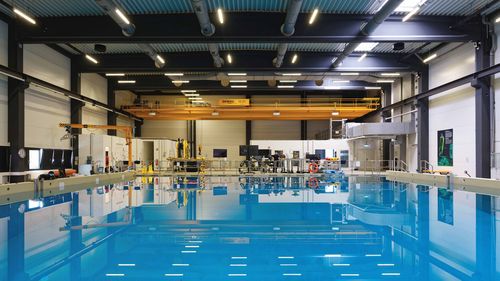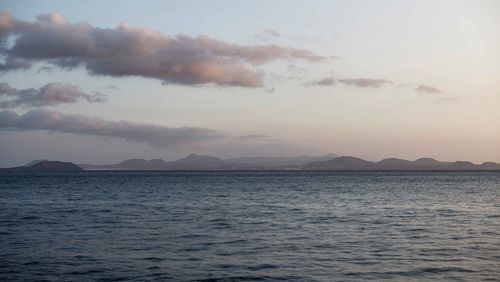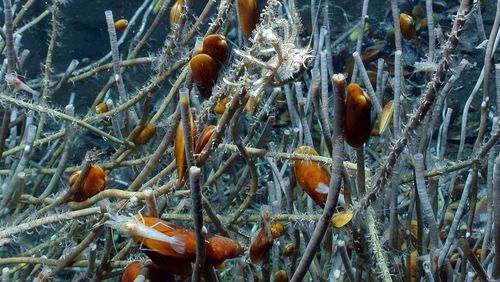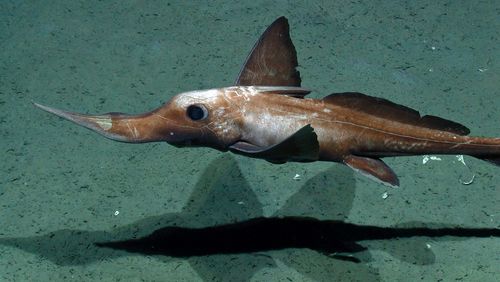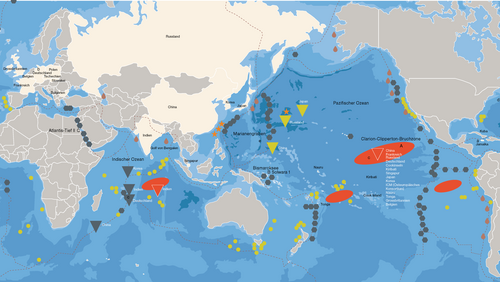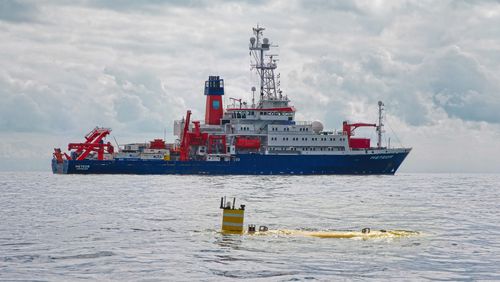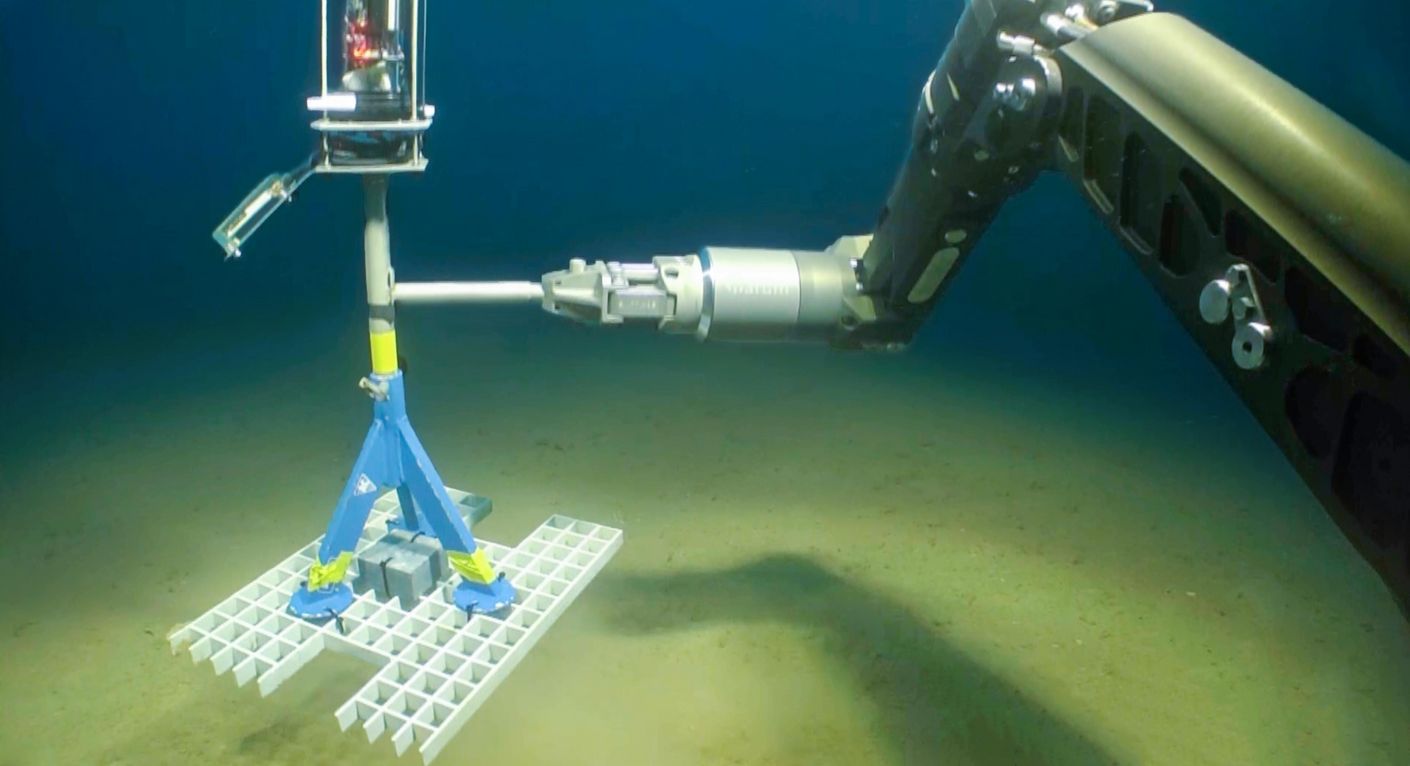
Self-sufficient underwater robot
Researchers at the Innovation Center for Deep-Sea Environmental Monitoring have begun cultivating partnerships and promoting technology transfer with other marine organisations—a step that has already begun to bear fruit.
Having laid the basis for their novel deep-sea environmental monitoring system, the project team are now shifting their attention to stages two and three: making their underwater robots first semi-autonomous, and then fully autonomous. In 2022, project leader Ralf Bachmayer hired two new specialists for these tasks: robotics engineer Dr Ehsan Taheri is in charge of optimising the robot’s underwater steering and control technology, and physicist Dr Anna Kolomijeca will work on the optical sensor systems.
Expecting the unexpected
When gliding over the seabed, the autonomous underwater vehicle (AUV) must be able to identify sudden surprises like cliffs—and then to react accordingly, without losing sight of its pre-programmed task. “The problem is easiest to understand if we imagine we’re flying over unknown terrain in the pitch dark using a simple torch to light our way—and we suddenly encounter a precipice,” Bachmayer explains. Having no adequate lighting makes it difficult to know whether the wisest choice is flying across or around it. To provide the necessary overview, a remotely operated underwater vehicle (ROV) works in tandem with the semi-autonomous AUV. “The tandem vehicle is equipped and programmed to ensure that the AUV close to the ocean floor is able to carry out quick, agile actions; if necessary, the AUV can access data stored in the ‘mother’ ROV located higher up and then calculate the best way to get to the programmed target,” Bachmayer says. His team of seven are already working on components for the fully autonomous underwater robots; once given a command such as “move along a temperature gradient”, these vehicles can then independently collect and interpret data to find the optimal solution.
Characterising deep-sea matter
One of the AUV’s key tasks in the deep sea is to identify matter in its immediate environment, be it rock, sand, suspended solids, gases or other chemical substances. For this work, the AUV is to be equipped with a Raman spectrometer, which will enable the autonomous vehicle to identify the composition of matter without even touching it—using back radiation of a substance that has been illuminated by a laser light source. Bachmayer says that “Raman spectroscopy is already being used today in drug tests”. Now, Anna Kolomijeca has plans to adapt the optical sensor to the conditions of the deep sea, making it possible for the AUV to identify a black smoker, for example, and analyse its emissions on-site. The instrument could also be used to examine the “sediment clouds” stirred up by deep-sea mining that endanger life forms found at the ocean floor.
Despite pandemic-related problems as well as supply shortages, the team managed to conduct several deepwater tests in 2022. In one, Ralf Bachmayer worked with Dr Maren Walter and colleagues on the German research vessel Meteor to study the measurement-steered control systems of commercial underwater gliders. Their experiments were part of a larger mission in the southern Atlantic Ocean to examine flow energy and atmosphere-ocean exchange; while on the research voyage, Bachmayer and his colleagues also tested the use of “their” algorithms in the gliders.
Working with the Eugen Seibold
This voyage is an example of the increased collaboration with other research groups and organisations like GEOMAR and the Fraunhofer Institute for Physical Measurement Techniques in Freiburg, Germany. In 2022, the Innovation Center for Deep-Sea Environmental Monitoring also began participating in the German Marine Research Alliance (DAM), which five northern German states established to coordinate and advance German marine research. Within the scope of the DAM research mission “Marine carbon sinks in decarbonisation pathways”, Bachmayer and his team are developing a mobile, long-term monitoring system whose sensors register the amount of carbon dioxide stored in the deep sea. When injecting CO2 into the ocean floor, it’s important to determine whether there are leaks and, if any are found, to measure how much CO2 is escaping.
Bachmayer has also contacted geologist Ralf Schiebel, research leader on the yacht Eugen Seibold—another project funded by the Werner Siemens Foundation. Bachmayer has plans to connect his remotely operated underwater vehicle, the MiniROV, with the sampler on the Seibold to test the transmission of images from the Atlantic Ocean.
